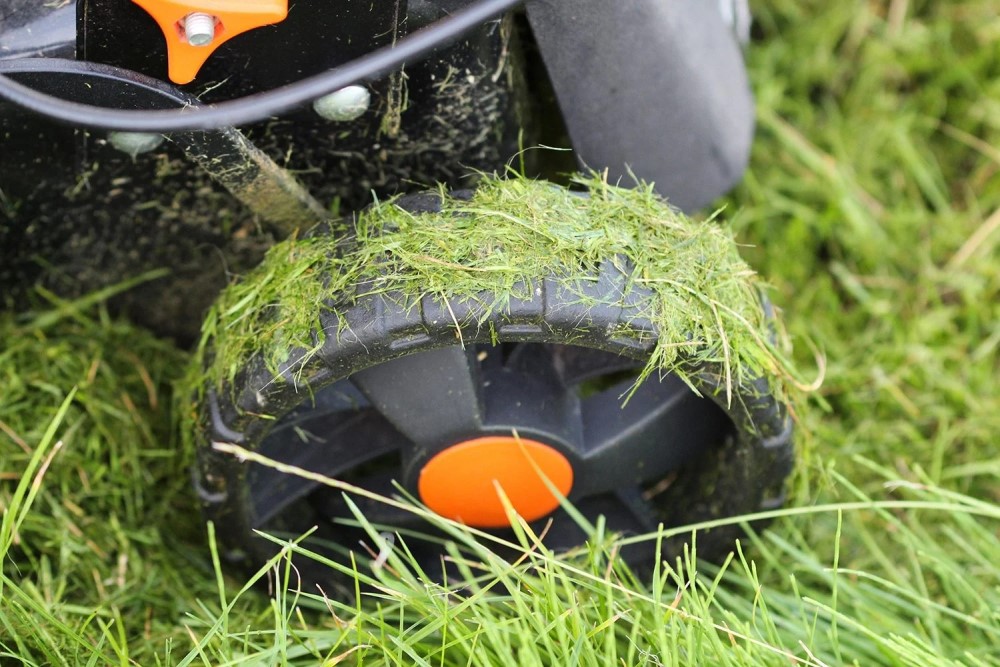Generally, it is not recommended to cut grass immediately after it rains. While technically possible, doing so presents several challenges and can be detrimental to your lawn's health, your mower, and your safety.
Why Mowing Wet Grass is Problematic
- Poor Cut Quality: Wet grass blades are heavy and tend to bend over rather than stand upright. This results in an uneven, ragged cut as the mower struggles to lift and slice them cleanly. The grass may tear instead of being cut, stressing the plant.
- Clogged Mower Deck: Wet grass clippings are sticky and clump together. These clumps can easily clog the mower deck, discharge chute, and bagging system, reducing cutting efficiency and potentially stalling the engine.
- Lawn Damage: Mower wheels can sink into soft, saturated soil, creating ruts and compacting the earth. Soil compaction restricts airflow and water penetration to the roots, harming grass health.
- Safety Risks: Wet grass is slippery, increasing the risk of slips and falls, especially when using a walk-behind mower or mowing on slopes. If using an electric mower, there's an added risk of electric shock if equipment is not properly insulated or if extension cords are damaged.
- Disease Spread: Mowing wet grass can facilitate the spread of fungal diseases. The mower can pick up fungal spores and distribute them across the lawn. Clumps of wet clippings left on the lawn can also smother the grass and create a moist environment ideal for fungal growth.
- Increased Mower Strain: Cutting heavy, wet grass puts additional strain on the mower's engine and blades, potentially leading to overheating or premature wear and tear.
When Might You Consider Mowing Damp Grass?
While ideally avoided, there are limited scenarios where mowing slightly damp grass might be considered:
- Light Dew or Mist: If the grass is only slightly damp from a very light drizzle or morning dew and the soil is not waterlogged, it might be manageable, especially with sharp blades and a powerful mower.
- Prolonged Wet Weather: If continuous rain prevents drying and the grass becomes excessively long, a mow during a brief dry spell might be necessary. However, allow as much drying time as possible.
Tips for Mowing Damp Grass (If Absolutely Necessary)
If you must mow when the grass is not fully dry, take these precautions:

- Wait for Partial Drying: Allow the grass to dry as much as possible. Even a few hours of sun and wind can significantly improve conditions.
- Raise Mower Height: Set your mower blades to a higher cutting setting to reduce the load on the mower and avoid scalping the lawn.
- Ensure Sharp Blades: Very sharp mower blades are crucial. They will cut more cleanly through damp grass rather than tearing it.
- Mow Slowly: Operate the mower at a slower pace to allow it to process the wet clippings more effectively.
- Clean Mower Frequently: Stop periodically to safely clear clumps of grass from the underside of the mower deck and the discharge area.
- Avoid Overlapping Passes Excessively: This can further compact wet soil.
- Consider Side Discharge: If your mower has this option, side-discharging wet clippings is often better than trying to mulch or bag them, as wet clippings mulch poorly and make bags very heavy.
- Rake Up Clumps: After mowing, rake up any large clumps of wet clippings left on the lawn to prevent them from smothering the grass beneath.
Conclusion
For the best results for your lawn's health, appearance, and your mower's longevity, it is strongly advisable to wait until the grass is dry before cutting it. Patience will lead to a cleaner cut, a healthier lawn, and a safer mowing experience.






